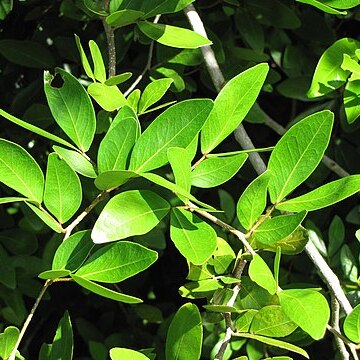Shrub or tree 3-8 m tall. Leaves 1-or 2-jugate. Leaflets ovate, elliptic, ovate-oblong or oblong, 1.5-9 by 0.9-2.1 cm; apex rounded, always emarginate, sometimes mucro-nate; nerves 5-7 pairs; petiole 4 mm, rachis 13 mm, petiolules c. 1 mm, all shortly hairy. Rachis of inflorescence 3-4 mm, densely pubescent; bracts minute, 1 mm long, hairy, glabrescent; bracteoles 2 mm long, inserted at 0.25-2 mm above the base of the pedicel; pedicels 4-6 mm, patently shortly hairy. Hypanthium 0.8-1 mm deep. Sepals 2.5-3.5 mm long, rather long-hairy. Petals very narrow, 2 by 0.3 mm. Stamens 3-5 mm; anthers more or less apiculate. Ovary densely, patently long-hairy, inside hairy; stipe 1 mm; style 3-3.5 mm, glabrous. Fruits ellipsoid, c. 6 by 2 cm, deeply rugose, shortly patent-hairy, the distal part beak-like and pointing obliquely.


